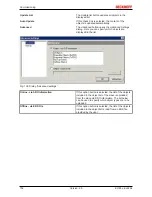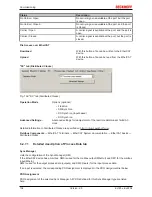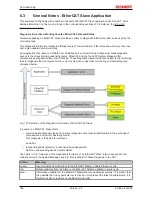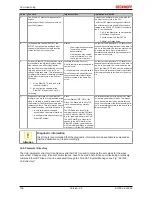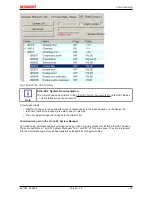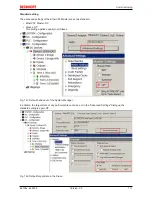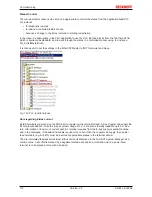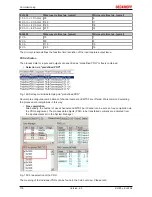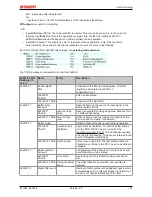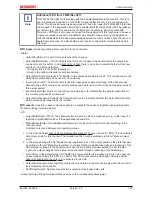
Commissioning
EL125x, EL2258
115
Version: 2.5
• For
outputs
: The controller loads switching orders into the buffer, depending on the configured MTSF.
In each microcycle a check is performed to determine whether the highest entry in the buffer is to be
executed. The behavior in the case of ‘outdated’ timestamps can be configured. If necessary the buffer
can be emptied by the controller.
Note: The current FW supports a buffer for 32 events. Other sizes on request.
Event
An "event" is defined as a changing signal edge at the input or output. Therefore, for an input channel an
event is the change in input state from 0->1 or 1->0. This consists of the information
timestamp
of the event
and
state 0/1
after the change.
For an output channel an event is a switching order, similarly consisting of two items of information:
timestamp
of the event and
state 0/1
after the desired change.
Timestamp
In its original state the EtherCAT distributed clocks time has the following properties: Starting time 1.1.2000
00:00, 64-bit range with 1 ns resolution (~ 584 years). In order to avoid redundant process data, the multi-
timestamp terminals operate with a reduced timestamp width of 32 bits (~ 4.29 sec.). Thus switching orders
can be specified up to 4.29 seconds in the future – input events must be processed within 4.2 seconds, as
otherwise an overflow occurs and the actually recorded time is no longer secured. Within the framework of
this documentation, a
function block FB is also provided [
}
124]
that accomplishes the filling up of 32-bit input
timestamps to the currently valid 64 bits in the PLC.
MTSF
Multi-timestamp factor
, currently 1..10, higher on request
In the configuration each channel can be configured to a fixed, maximum number of events that can be
transferred per EtherCAT cycle. In other words, this is the maximum number of events (switching orders for
outputs or events for input terminals) that can be exchanged with the control/PLC. These process data are to
be understood as placeholders, which are not all to be filled at all times. This means for
•
Inputs
:
The number of input events placed in the process data for the controller by the channel matches the
number of events that arrived at the input during the last cycle OR are still in the buffer.
•
Outputs
:
The events predefined by the controller are transferred to the channel buffer, which is then processed
based on the FIFO principle.
Macrocycle
The terminal requires a certain time for internal cyclic processing of the operations. Depending on the
number of active channels and configured MTSF, the internal processing time for the terminal is in the range
of several 100 µs, see table below.
The macrocycle time resulting from the actual configuration can be read online from the CoE 0xF900:08.
Fig. 146: Microcycle 0xF900:09 & macrocycle 0xF900:08 in the CoE
This time should be regarded as the absolute lower limit for the EtherCAT communication. The EtherCAT
task cycle time applied to this terminal should be chosen 10..20 % higher, depending on system
performance. The macrocycle times listed in the table below have been determined empirically and should
be regarded as guide values. The actual macrocycle time occurring in the system should be verified during
commissioning in the CoE object referred to above.


